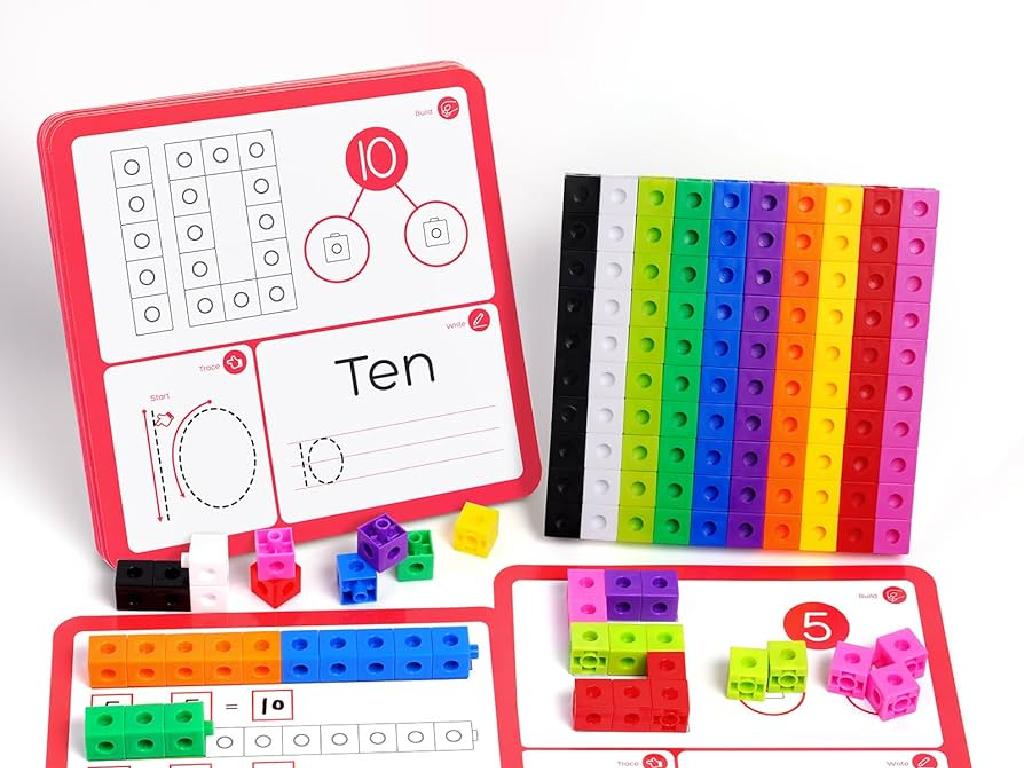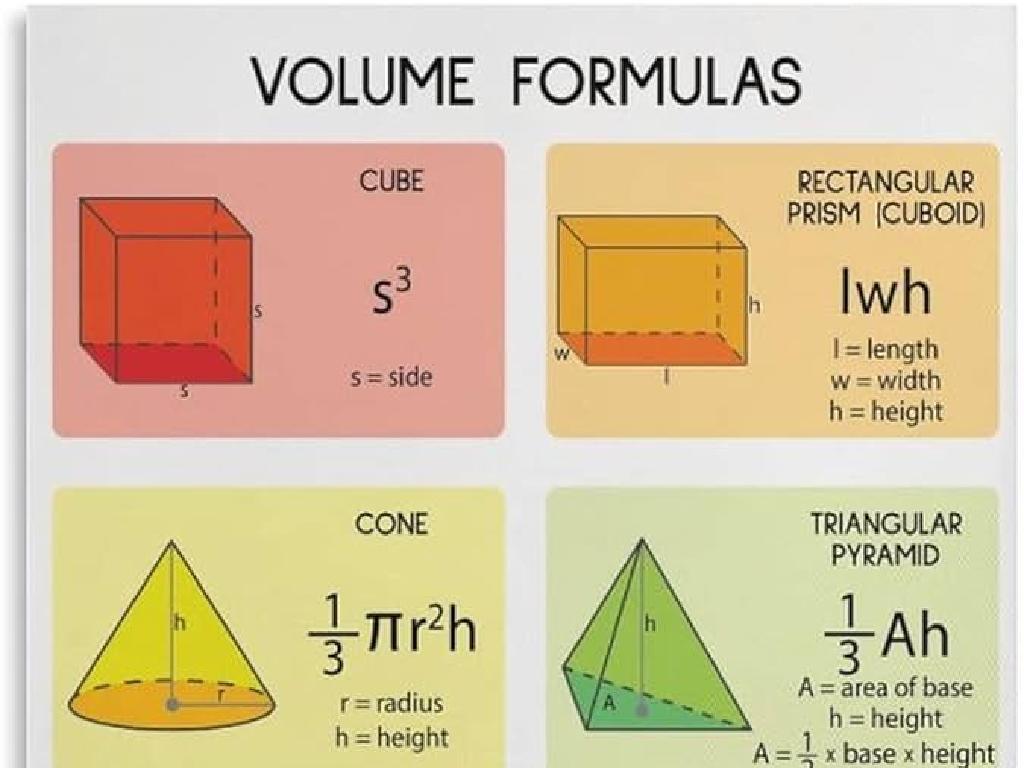What Are Atoms And Chemical Elements?
Subject: Science
Grade: Eighth grade
Topic: Atoms And Molecules
Please LOG IN to download the presentation. Access is available to registered users only.
View More Content
Atoms & Chemical Elements: Matter’s Building Blocks
– Atoms: Matter’s fundamental units
– Atoms are the smallest units that define the chemical elements and cannot be broken down further by chemical means.
– Chemical elements: Varieties of atoms
– Each chemical element, like oxygen or carbon, is made up of one type of atom.
– Today’s learning objectives
– Why atoms & elements matter in science
– Understanding them is crucial for studying all physical substances and their reactions.
|
This slide introduces the foundational concepts of atoms and chemical elements, which are essential for students to grasp the basics of chemistry and physics. Atoms are the smallest units of matter that retain the properties of an element, and they combine in various ways to form molecules. Chemical elements are pure substances consisting entirely of one type of atom. Today, we will explore what atoms and elements are, how they form the world around us, and why they are important in science. Emphasize that a strong understanding of these concepts is vital for further studies in science, as they form the basis for understanding chemical reactions, the properties of materials, and the composition of the universe.
Exploring the Building Blocks: Atoms
– Atom defined
– An atom is the smallest constituent unit of ordinary matter.
– Atoms: Matter’s smallest unit
– Atoms are the basic building blocks of all matter.
– Atoms’ basic structure
– Atoms consist of a nucleus and orbiting electrons.
– Protons, Neutrons, Electrons
– The nucleus contains protons (positive) and neutrons (neutral); electrons (negative) orbit around.
|
This slide introduces the concept of atoms to the students, defining them as the smallest units of matter that retain the properties of an element. Emphasize that everything around us is made up of atoms. Discuss the basic structure of an atom, which includes the nucleus at the center and electrons orbiting around it. The nucleus itself is made up of protons and neutrons. Protons carry a positive charge, while neutrons are neutral, and electrons carry a negative charge. Understanding the structure of an atom is fundamental to learning about chemical elements and the composition of substances in the universe.
Exploring the Atom
– The nucleus: Atom’s core
– Dense region at center, made of protons and neutrons
– Electrons: Orbiting particles
– Negatively charged, in constant motion around the nucleus
– Atomic particle interactions
– Protons attract electrons, while neutrons are neutral
– Significance in chemistry
|
This slide introduces the basic structure of an atom, which is the fundamental building block of matter. The nucleus, composed of positively charged protons and neutral neutrons, serves as the core of the atom. Electrons, with their negative charge, orbit the nucleus and are held in place by the electromagnetic force between them and the protons. Understanding how these particles interact is crucial for comprehending chemical reactions and the formation of molecules. Highlight the importance of these concepts in chemistry and encourage students to visualize the atom’s structure. Provide examples of how atomic interactions lead to the formation of different substances.
Exploring Chemical Elements
– Definition of chemical elements
– Basic substances that cannot be broken down
– Common elements: H, O, C
– Hydrogen (H), Oxygen (O), Carbon (C) are building blocks of matter
– Unique properties of elements
– Each element has a unique set of characteristics
– Significance in science
|
Chemical elements are the fundamental substances that make up all matter in the universe. They cannot be broken down into simpler substances by chemical means. This slide introduces students to the concept of elements, with a focus on common ones such as Hydrogen, Oxygen, and Carbon, which are essential to life and found abundantly in nature. Discuss the unique properties that distinguish one element from another, such as atomic number, reactivity, and occurrence. Emphasize the importance of elements in various scientific fields, including chemistry, biology, and environmental science. Encourage students to think about how these elements combine to form the world around them.
Significance of Chemical Elements
– Elements: Compounds’ building blocks
– Just like bricks in a building, elements combine to form all the compounds around us.
– Elements’ role in nature
– Elements are essential in ecosystems, forming air, water, and living organisms.
– Elements in technology
– From silicon in electronics to lithium in batteries, elements are key in tech.
– Elements’ industrial use
– Elements like iron in construction and helium in balloons are used in various industries.
|
This slide aims to highlight the fundamental importance of chemical elements in various aspects of the world around us. Chemical elements are the basic building blocks from which all compounds are made, much like bricks come together to build structures. In nature, elements are crucial for life and the environment, forming everything from the air we breathe to the plants and animals that make up ecosystems. Technologically, elements are integral to the development and functioning of gadgets and machinery, with specific elements being indispensable for certain applications. Industrially, elements are used in a myriad of ways, from construction materials to manufacturing processes. Understanding the role of elements in these contexts will give students a deeper appreciation for chemistry in everyday life.
Atoms in Action: Building Blocks of Matter
– Atoms combine to form molecules
– Atoms, like puzzle pieces, join to create different substances.
– Chemical bonds: atoms’ strong connections
– Think of bonds as super glue keeping atoms together.
– Simple molecules: H2O, O2, CO2
– Water (H2O), Oxygen (O2), and Carbon Dioxide (CO2) are common examples.
– Significance of molecular formation
|
This slide aims to explain how individual atoms connect to form more complex structures known as molecules. Emphasize the concept of chemical bonds acting as the ‘glue’ that holds these atoms in place, forming stable molecules. Provide familiar examples such as water (H2O), oxygen (O2), and carbon dioxide (CO2) to illustrate the concept of molecular formation. Discuss the importance of molecules in various chemical reactions and their relevance to everyday life. Encourage students to think of molecules as the outcome of teamwork among atoms, leading to the diverse range of substances we encounter.
Class Activity: Building Molecular Models
– Let’s build our own molecules!
– Use model kits for creation
– Each atom type has a specific color in the kit
– Learn molecular structures hands-on
– Assembling atoms shows how molecules are structured
– Discuss the importance of molecular shapes
– Molecular geometry affects how molecules behave
|
This activity is designed to provide students with a tactile learning experience. By using molecular model kits, students will gain a better understanding of how atoms bond to form molecules and the significance of molecular geometry. The kits typically include different colored balls representing various elements and connectors to mimic bonds. Encourage students to build models of simple molecules like water (H2O) and carbon dioxide (CO2). After the activity, discuss how the shape of a molecule can affect its properties and interactions with other molecules. This hands-on approach helps to solidify the abstract concept of molecular structure in a concrete and memorable way.
Conclusion: Atoms & Elements Recap
– Atoms: Building blocks of matter
– Elements: Pure substances of atoms
– Molecules: Atoms bonded together
– Significance of these concepts
– Understanding the basics is crucial for grasping chemical reactions in future lessons.
|
This slide aims to consolidate the students’ understanding of the fundamental concepts of atoms, elements, and molecules. Atoms are the smallest units of matter that retain all the properties of an element. Elements are pure substances that consist entirely of one type of atom. Molecules are groups of two or more atoms held together by chemical bonds. Emphasize the importance of these concepts as the foundation for all of chemistry, including the upcoming lessons on chemical reactions. Encourage students to ask questions and review these concepts to ensure a solid understanding before moving forward.
Homework: Explore an Element
– Research a periodic table element
– Prepare a presentation on its properties
– Focus on physical and chemical properties
– Discuss its uses in everyday life
– Think of common or unique applications
– Explain its combination with other elements
– How does it bond to form molecules?
|
This homework assignment is designed to deepen students’ understanding of chemical elements and their significance. Students should select an element from the periodic table, research its properties such as atomic number, atomic mass, and whether it’s a metal, nonmetal, or metalloid. They should also explore the element’s practical uses in the world around them, which helps to contextualize their learning. Additionally, students should be prepared to explain how their chosen element can combine with others to form molecules, discussing types of bonds like ionic or covalent. This will prepare them for understanding chemical reactions and compounds. Encourage students to use credible sources and to present their findings in a clear, concise manner.





